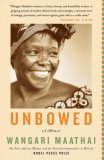Summary | Excerpt | Reading Guide | Reviews | Beyond the Book | Readalikes | Genres & Themes | Author Bio

Critics' Opinion:
Readers' Opinion:
First Published:
Oct 2006, 352 pages
Paperback:
Sep 2007, 352 pages
 Book Reviewed by:
Book Reviewed by:
BookBrowse Review Team
Buy This Book
My great-grandparents, whom I did not know, lived in a pre- European world. They would probably not have interacted with any other communities outside the central highlands, apart from the Maasais, who are pastoralists, herders of cows and goats. The Maasai traditional way of life required them to transverse the large plains to the west of the highlands, the vast grassland surrounded by ridges resulting from seismic activity that ripped apart the earth’s crust many millions of years ago. The “scar” stretches from Jordan to Mozambique, forming the Great Rift Valley.
At times, Maasais would raid Kikuyu villages, take away their cattle, and kill their young men, and the Kikuyus would do the same to the Maasais. But there were also times of truce, trade in the form of exchange of food, livestock, and land, and even intermarriage. These interethnic links helped cement ties between communities and foster peace. In Nyeri, mixed Maasai and Kikuyu blood was common and never viewed as a stigma. My mother had Maasai blood in her. Like her father, she was lithe, with high cheekbones and straight hair, characteristics more typical of Maasais than Kikuyus. We were told that my great-great-grandmother on my father’s side was a Maasai who was abducted during a raid. When she came to the highlands, she adopted Kikuyu customs and named her second son Muta, after her father. That name was eventually handed down to my father and, later, to my second son.
Throughout the nineteenth century, European missionaries crisscrossed Africa, clearing the way for Christianity. Almost immediately behind them came numerous explorers, adventurers, fortune seekers, and those in the service of the European powers prospecting for riches in Africa (both natural and human) to exploit. In Kenya, the British, perhaps because they did not want local people to receive competing Christian messages from denominations that were already contesting fiercely in Europe, subdivided the country and apportioned different areas to different denominations. Among the Catholics, many different orders were active in Kenya: the Consolata Missionary Sisters from Italy and the Holy Ghost Order and Loreto Sisters from Ireland. Most of the first missionaries in my area were Scottish Presbyterians and Italian Catholics.
The missionaries would generally do their work by visiting villages and attending to peoples’ health needs. They treated particularly stubborn conditions, such as gangrene or difficulties with childbirth, that could not be healed with local remedies like herbs and tree bark, and then established health centers. Initially, the missionaries would instruct small groups of adults in reading—only after they had converted to Christianity—but quite rapidly they established schools. I admire the missionaries’ patience and ingenuity in facilitating communication among people who did not understand one another’s languages. They did their work well.
The art of reading and writing must have hit people like lightning. It must have been extraordinary to them that lines and dots on a page or a slate when taken together could transmit a message that a person many miles away could receive. It must have seemed like a new form of magic that overshadowed what Kikuyus had known until then. Reading and writing fascinated them and they embraced it with a passion.
Before the arrival of the missionaries, Kikuyus and all the Kenyan communities had largely oral cultures. The ways they delivered a message or passed information included the use of drums, horns, shouting, or sending somebody. Among Kikuyus, one interesting form of message transmission and education was gichandi, which was made from a gourd. When you shook it, the beads on strings on the outside and the seeds and stones inside made music. As players or actors shook the gourd, they relayed riddles, proverbs, and other folk wisdom and information. These gourds were also inscribed with symbols and marks that represented a form of writing that these artisans would use for recitations and conveying information.
Excerpted from Unbowed by Wangari Maathai Copyright © 2006 by Wangari Maathai. Excerpted by permission of Knopf, a division of Random House, Inc. All rights reserved. No part of this excerpt may be reproduced or reprinted without permission in writing from the publisher





The House on Biscayne Bay
by Chanel Cleeton
As death stalks a gothic mansion in Miami, the lives of two women intertwine as the past and present collide.

The Flower Sisters
by Michelle Collins Anderson
From the new Fannie Flagg of the Ozarks, a richly-woven story of family, forgiveness, and reinvention.

The Funeral Cryer by Wenyan Lu
Debut novelist Wenyan Lu brings us this witty yet profound story about one woman's midlife reawakening in contemporary rural China.
Your guide toexceptional books
BookBrowse seeks out and recommends the best in contemporary fiction and nonfiction—books that not only engage and entertain but also deepen our understanding of ourselves and the world around us.